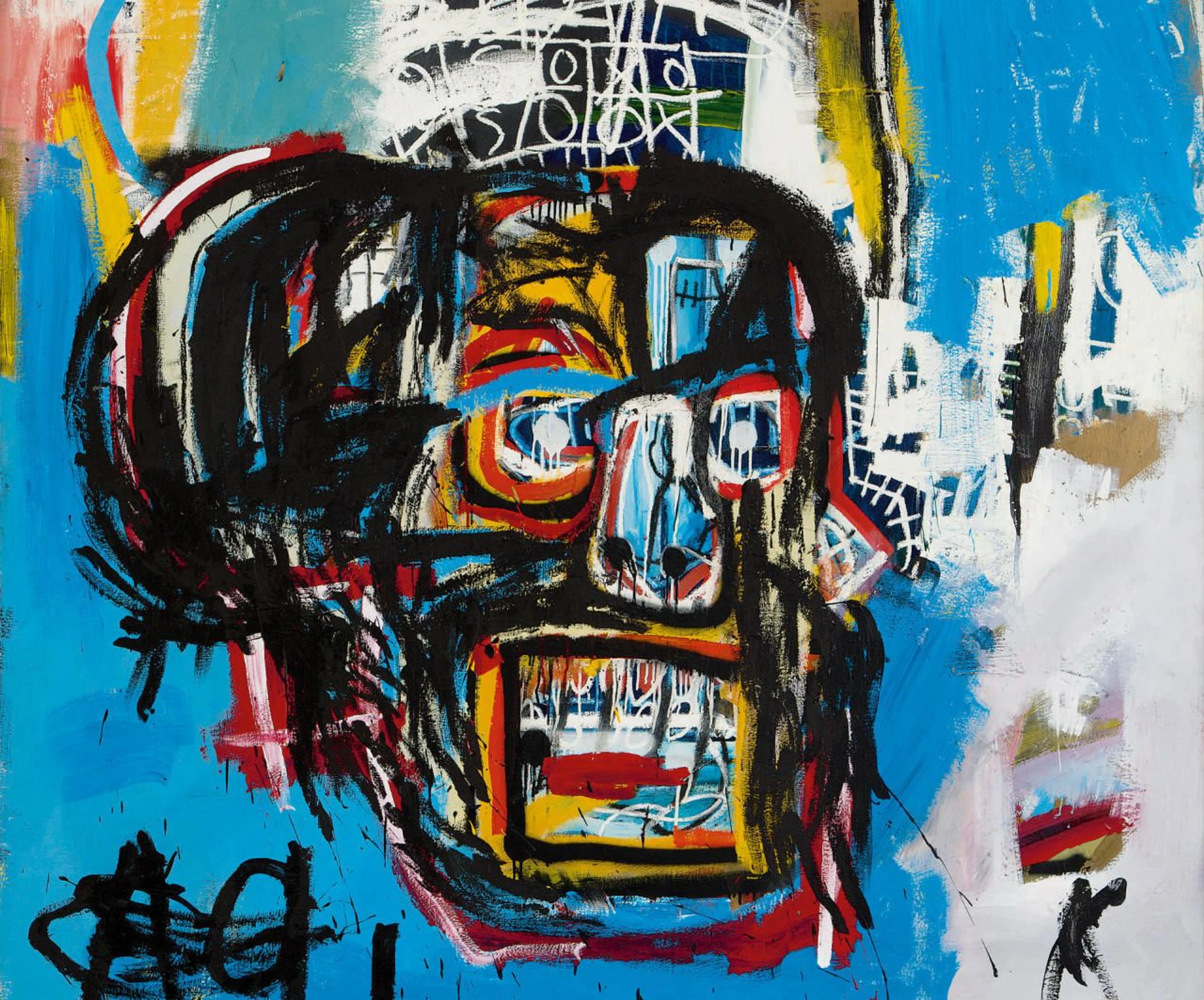
Mythical Creature Symbolism in Art: Archetypes, Evolution & My Abstract Journey
Explore the enduring symbolism of mythical creatures in art, from global dragons and sphinxes to contemporary archetypes. Discover their cultural evolution, psychological impact, and how they inspire my abstract paintings.
Mythical Creature Symbolism in Art: An Artist's Deep Dive into Universal Archetypes, Evolution & My Abstract Journey
I remember a moment, years ago, staring at a medieval tapestry—a unicorn hunt, I think it was—and feeling this strange, profound jolt. For ages, I'd just admired the intricate weaving, the fantastical beast. But that day, something clicked, deeply. It wasn't just a pretty picture or a monster from a fairytale. It was a message, vibrating with a meaning that echoed across centuries, almost an unconscious whisper. As an artist, and honestly, as someone who probably spends way too much time lost in museums (both old and new!), I started seeing these mythical creatures – from the fierce dragons of East and West to the enigmatic sphinxes of Egypt, the resurrecting phoenixes, and trickster figures like West Africa's Anansi, even beings like the Griffin or the Minotaur – as ancient emojis. They’re a secret, universal language, conveying complex ideas, fears, hopes, and cultural values that still resonate today. Once you start to crack that code, art history stops being just a collection of pretty things and becomes a vibrant, ongoing conversation across time. This isn't merely about decoding symbols; it's about connecting with the universal human experiences they represent. This journey profoundly shapes my own abstract art and my understanding of our shared human story. We'll explore how these ancient whispers evolved across cultures, how different societies interpreted them, and how they continue to inspire artists like myself today. My journey as an artist is deeply intertwined with these timeless symbols, acting as a bridge between my personal vision and the collective unconscious that binds us all. It's a vast world we're about to explore, from the very first marks on cave walls to the digital canvas of today.
![]()
This idea of tapping into a deeper, unspoken reality is something I see echoed not only in ancient myths but also in contemporary abstract art. Just like the abstract patterns of Christopher Wool's work can evoke a visceral, unnamed feeling – a subtle whisper of underlying reality – so too do the forms of mythical creatures. They tap into something deeper than mere illustration, hinting at shared human experiences and an underlying psychic reality that transcends individual consciousness. These early forms of visual language laid the groundwork for later writing systems, shaping entire civilizations.
The Whispers of Old Worlds: How Myths Became Art and Shaped Cultures
Think about it: before widespread written language, how did people communicate profound truths about life, death, morality, or the unknown? Well, they told stories, sharing them orally around fires and in communal gatherings for generations. These narratives were the bedrock, preserving profound truths, and into those stories, they wove creatures that embodied these concepts. A fearsome beast wasn't just a beast; it was chaos personified. A gentle, ethereal one represented purity or divine intervention. This wasn't just a quaint practice; it was a powerful system, often interpreted and reinforced by shamans, priests, or tribal elders who held significant cultural authority, solidifying the meanings of these early symbols within their communities. Early forms of art—from the prehistoric cave paintings in Lascaux depicting powerful animals to the intricate patterns on ancient pottery—served as initial visual anchors for these oral traditions. They were the world's first widespread visual shorthand, a pre-linguistic form of communication that shaped collective consciousness, passed down long before scripts were common. The materials available—ochre pigments for cave walls, clay for vessels, or later, loom threads for tapestries—also fundamentally shaped how these creatures could be depicted, influencing their forms and the stories they told. Whether scratched into rock, molded from clay, or painted on temple walls, the very scale of these artworks, from monumental to intimate, dictated their reach and impact. Public monuments and temples, in particular, served as massive visual storytelling devices, constantly reinforcing these communal narratives. This process, which I find endlessly fascinating, is something I delve into further in my article on understanding the symbolism of mythological creatures in art history.
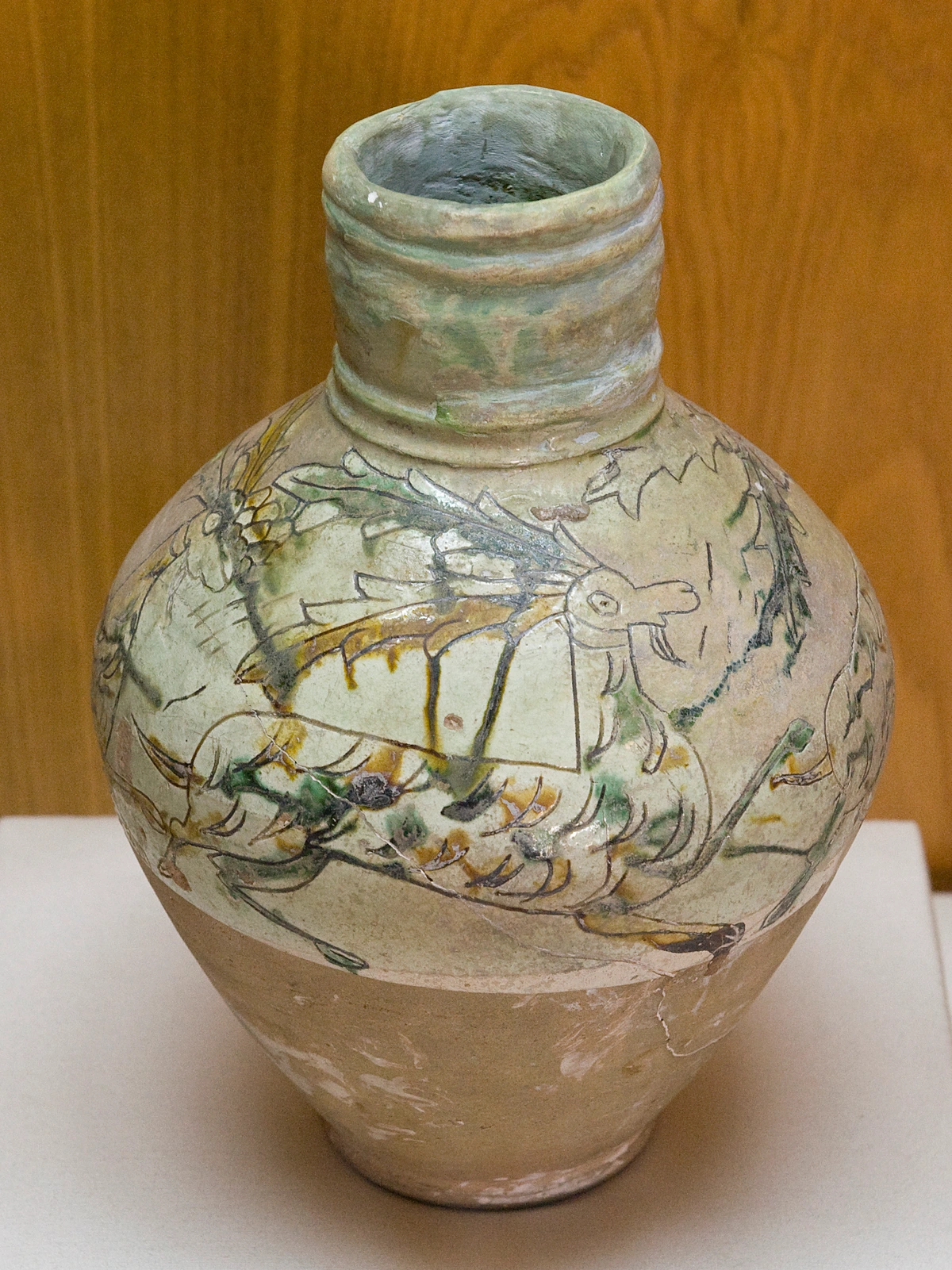
These ancient artists weren't merely illustrating narratives; they were the visual storytellers, solidifying cultural understanding and shaping beliefs through images disseminated on everything from everyday pottery to grand tapestries and frescoes. Their art was, in essence, the original mass media, conveying identity and shared values. These powerful symbols traveled with storytellers and traders, becoming foundational elements of a truly shared worldview, sometimes echoing across vast distances and connecting communities long before the written word could. They taught people how to understand the world.
Dragons: More Than Just Fire-Breathers
Take dragons, for instance. My initial thought? Big, scary, fire-breathing lizards. Definitely dangerous. But then you look closer. In Western art, they're often portrayed as forces of evil, guardians of treasure, or symbols of sin and destruction, vanquished by heroic saints. Think St. George and the Dragon – a classic good-versus-evil narrative, right? This often reflects societies grappling with external threats and the need for moral order, often informed by Christian narratives where dragons represent paganism or demonic forces. This is where the 'dragon slayer' archetype often emerges, representing humanity's struggle against chaos, a hero's journey to restore order. But then you hop over to East Asian art, and suddenly dragons are symbols of wisdom, power, good fortune, and imperial authority. They're not just respected; they're revered, often benevolent rain-bringers, reflecting cultures closely tied to agricultural cycles and harmonious natural forces. It truly blows my mind how the same fundamental 'creature' can carry such strikingly different meanings depending on the cultural lens. Doesn't that make you wonder about the power of perspective, and how much our own cultural baggage influences what we see?
And beyond the straightforward good-versus-evil narratives, some traditions, particularly within ancient philosophical thought and alchemical symbolism, saw the dragon (or serpent) as the Ouroboros—that powerful image of a serpent biting its own tail. It’s a profound symbol of cyclicality, unity, eternal return, and the raw, untamed prima materia (the undifferentiated origin of all things), from which all things emerge and to which they return. This ancient symbol, found in diverse cultures from Egyptian to Norse, and even echoing in some Greek and Gnostic philosophies, encapsulates the idea that life is an endless loop of creation and destruction, a concept that just seems to keep resurfacing in human consciousness. It’s a powerful echo of universal transformation, a vivid reminder that the only constant is change.
Beyond the Dragon: Composite Creatures and Enduring Symbolism
The dragon is just one powerful example, though, from a truly vast bestiary of creatures born from the incredible tapestry of human imagination. Let's delve into other composite beings for a moment, because they're fascinating blends of the familiar and the unknown, often created to embody complex ideas. Psychologically, humans create hybrid creatures to integrate disparate qualities, to personify complex fears or desires, or to synthesize different domains of existence (e.g., land and air).
Take the majestic Griffin, for instance, with its lion's body and an eagle's head. It's often seen as a symbol of supreme strength and vigilance, combining the king of beasts and the king of birds. Or consider the fearsome Chimera, a grotesque blend of lion, goat, and snake, embodying monstrous hybridity and destructive forces. And what about the Manticore? A terrifying Persian beast with a human head, lion's body, and scorpion's tail, embodying deadly cunning and brute force—a true synthesis of threats. Then there are creatures that lure with beauty but hold danger, like the Sirens of Greek myth, whose enchanting songs led sailors to their doom, or the terrifying Harpies, winged women with sharp talons, symbols of torment and divine retribution. These fantastic amalgamations speak volumes about how ancient cultures blended the known with the unknown, conceptualizing complex ideas like divine power, hidden dangers, or the synthesis of different domains. It's a bit dense, but these blends really show how rich ancient thought was!
Then there are creatures that highlight the duality of our own nature, like the Centaur, split between human intellect and animal instinct, or the tragic, powerful Minotaur, a symbol of primal strength and inescapable fate. And of course, the enigmatic Sphinx, with its human head and lion's body. The riddles it posed, as famously seen with Oedipus, weren't just brain-teasers; they challenged knowledge, human limitations, and destiny itself. Solving the riddle wasn't just about cleverness; it was a symbolic act of human intelligence overcoming brute force and fate, grappling with fundamental existential questions.
Even beyond these creatures, early art itself was a powerful canvas for symbolism. Consider how simpler, non-creature depictions, like an Egyptian ankh or a Nordic rune, could hold profound symbolic weight, acting as visual touchstones for communal belief and deeply held truths. It really makes me realize how deeply embedded symbolic thinking is in our shared history, manifesting in forms as simple as a simple rune or the complex form of a creature of myth. For an artist like me, it's a constant reminder of the power of distilled meaning, a concept I try to echo in my own abstract work.
Phoenix, Serpent, and the Unseen Truths
And it's not just dragons or composite beasts that hold deep meaning. The Phoenix, for example, is probably one of the most universally recognized symbols of rebirth, renewal, and resilience. Born from flames, intrinsically linked to the sun's cycle of daily death and renewal, and embodying immortality, it’s a powerful reminder that out of ashes, new life can always emerge. Honestly, who hasn't felt like a phoenix needing to rise from the ashes after a particularly challenging week, right? (I know I have, usually after attempting to debug some code.) Then there's the Serpent, another creature whose symbolism wildly shifts. In many ancient cultures, it’s a symbol of healing and wisdom—just think of the Rod of Asclepius, the ancient Greek symbol for medicine, where two serpents entwine. The serpent's ability to shed its skin also makes it a powerful metaphor for renewal and transformation, literally shedding old selves and beliefs, mirroring the Phoenix's cycle. In ancient Egypt, the uraeus (a stylized, upright cobra) was a symbol of divine authority and protection, representing Wadjet, the cobra goddess, embodying wisdom and sovereignty, even as the monstrous serpent Apep represented chaos. In some Gnostic traditions, the serpent even represented divine knowledge or wisdom itself, guiding humanity to hidden truths. Yet, in Abrahamic traditions, it starkly represents temptation and evil. And across South Asia, the Naga – often depicted as a divine serpent or dragon-like being – can be benevolent protectors, bringers of rain and fertility for crops, or guardians of treasure. Even in Norse mythology, the Jörmungandr (Midgard Serpent) wraps around the world, symbolizing chaos and the cyclical end-and-renewal of existence. These profound contradictions vividly demonstrate how cultural narratives deeply intertwine with the meanings we assign to these archetypal forms. It's a stark reminder that context truly is everything when cracking these ancient codes—what seems menacing in one culture might be revered in another. This multiplicity of meaning, for me, only makes them more fascinating.
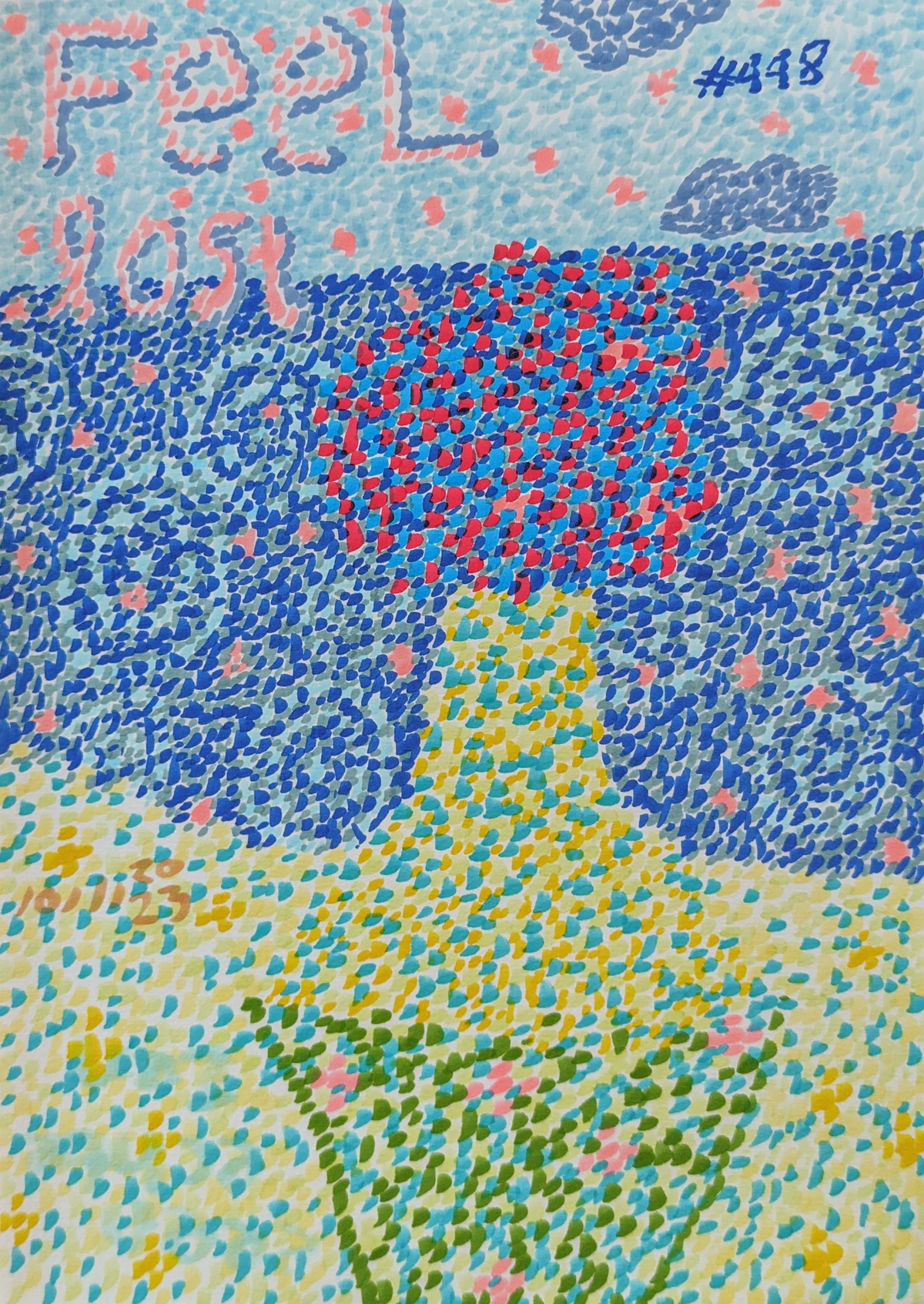
A World of Wonder: Global Mythologies
My fascination with these incredible symbols, as you might guess, extends far beyond the familiar Western bestiaries. It’s a truly global phenomenon, this human need to imbue creatures with meaning and integrate them into a larger divine or cosmic pantheon. Stepping away from the Western tradition for a moment, let's look at how other cultures have crafted their own vibrant pantheons.
In Egyptian mythology, for example, Anubis, the jackal-headed god, isn't just a guide to the underworld; he's a powerful symbol of funerary rites, protection, and the spiritual journey of the soul, crucial for ensuring a safe passage to the afterlife and maintaining cosmic balance. In Hindu and Buddhist traditions, Garuda, a large mythical bird with a human-like torso, is a vehicle for Vishnu and a potent emblem of dharma, strength, and soaring freedom, often depicted battling serpents (Nagas) to uphold cosmic order. And in Mesoamerican cultures, you find figures like Quetzalcoatl, the feathered serpent deity, embodying a powerful duality of earth and sky, wisdom and creation, often associated with agricultural fertility, the cycles of time, and the very act of bringing knowledge to humanity. Even in some Indigenous American cultures, figures like the Thunderbird command respect as powerful spirits of storm and change, while the mischievous Coyote often takes on the role of a trickster, bringing both chaos and creation. These examples really drive home that each culture, responding to its unique landscape and experiences, crafts its own vibrant pantheon of symbolic figures, all speaking to universal human concerns in their own unique visual language, often fulfilling critical roles within their respective cosmologies. This rich tapestry of global mythologies is an endless source of inspiration, a testament to our shared human imagination and search for meaning.
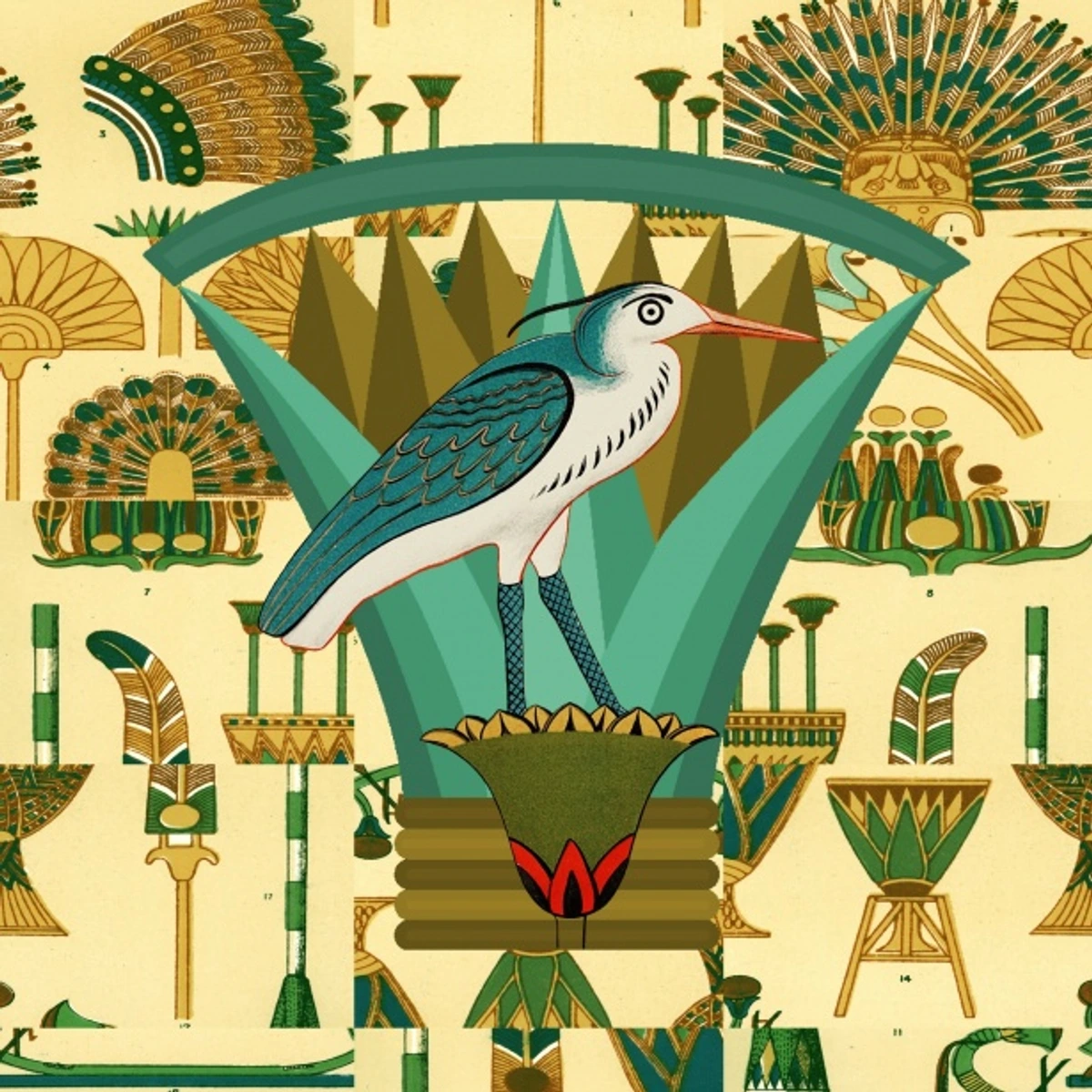
The Enduring Trickster
Speaking of tricksters, it's an archetype that pops up in almost every culture, doesn't it? From West Africa's Anansi the spider to the Native American Coyote or even figures like Loki in Norse mythology, the trickster isn't simply good or evil. They embody cunning, subversion of norms, and catalysis for change. They challenge authority, break rules, and often, through their mischief, bring about new knowledge or a necessary shift in perspective. As an artist, I find this archetype endlessly fascinating; it reminds me that creativity often thrives on breaking conventions and seeing the world in an unexpected way.
From Ancient Frescoes to Modern Canvases: Evolution Through the Ages
What I find particularly fascinating is how these symbols aren't static. They evolve, shift, and get reinterpreted. Artists throughout history have been the translators of these mythological narratives, not just copying but actively interpreting, adding layers of their own cultural context, personal anxieties, and contemporary concerns. For instance, a medieval artist might depict a unicorn as a literal, pure white beast, representing chastity and divine grace, pulling inspiration directly from biblical texts or medieval bestiaries. But then, fast forward to a Renaissance painter, and the unicorn might become a more allegorical figure, still pure but perhaps more domesticated, reflecting a shift from purely religious to more humanistic symbolism. Fast forward again to a Symbolist painter in the late 19th century, and they might use the idea of a unicorn – its ethereal nature, its elusive beauty – to comment on spiritual purity or unattainable ideals in a rapidly industrializing, secularizing world. The creature itself might not be literally present, but its essence profoundly informs the work, changing its meaning for a new era.
And of course, the very materials and techniques employed—from the monumental, public scale of fresco painting (perfect for grand, universally understood narratives in vast spaces like the Palazzo Barberini ceiling) to the intricate detail of manuscript illumination or mosaic (often for more intimate or esoteric meanings meant for individual contemplation), the rich texture of oil on canvas, or the commanding presence of sculpture—also profoundly shaped how these symbols were perceived and interacted with by their audiences. The permanence of stone sculpture, for example, lends an enduring, almost eternal quality to figures, while the vibrant, immediate strokes of a fresco create a dynamic, narrative experience. Artists would immerse themselves in classical texts, folklore collections, and religious scriptures to truly understand the narratives they were tasked with bringing to life, acting as visual custodians of collective memory. This continuous reinterpretation often reflects a society's changing values, anxieties, and aspirations, making the art a mirror to its time.
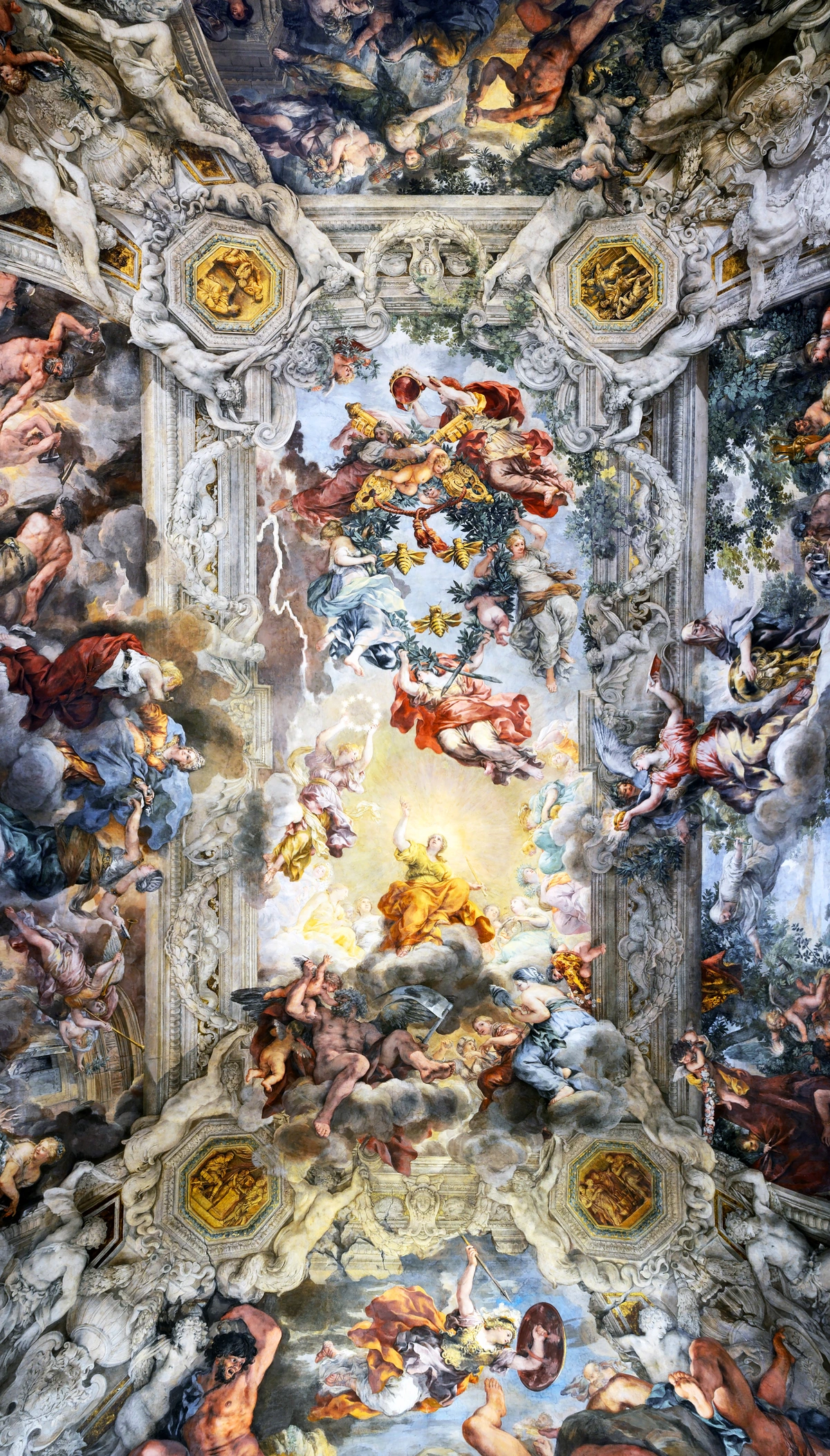
Contemporary Art: Forging New Myths and Reinterpreting Old Ones
It really makes you wonder what our 'mythological creatures' are today, doesn't it? Perhaps superheroes, or even abstract forms that evoke primal feelings within us. Modern technology, from blockbuster films to video games, graphic novels, and even digital art and animation, continuously reinterprets old myths and forges new ones, creating contemporary pantheons that resonate with our current hopes and anxieties, echoing the archetypal hero's journey found in myths across millennia. Contemporary artists might also directly engage with classical mythology, re-contextualizing figures like Medusa or Hercules to comment on modern power structures, gender roles, or identity, proving that these stories remain fertile ground for artistic exploration. Even beyond specific figures, many abstract artists, though not always explicitly referencing myths, tap into universal energies and archetypes that echo mythological themes, exploring concepts like creation, destruction, chaos, and order through color and form. It’s about evoking the feeling of a myth, rather than illustrating it directly.
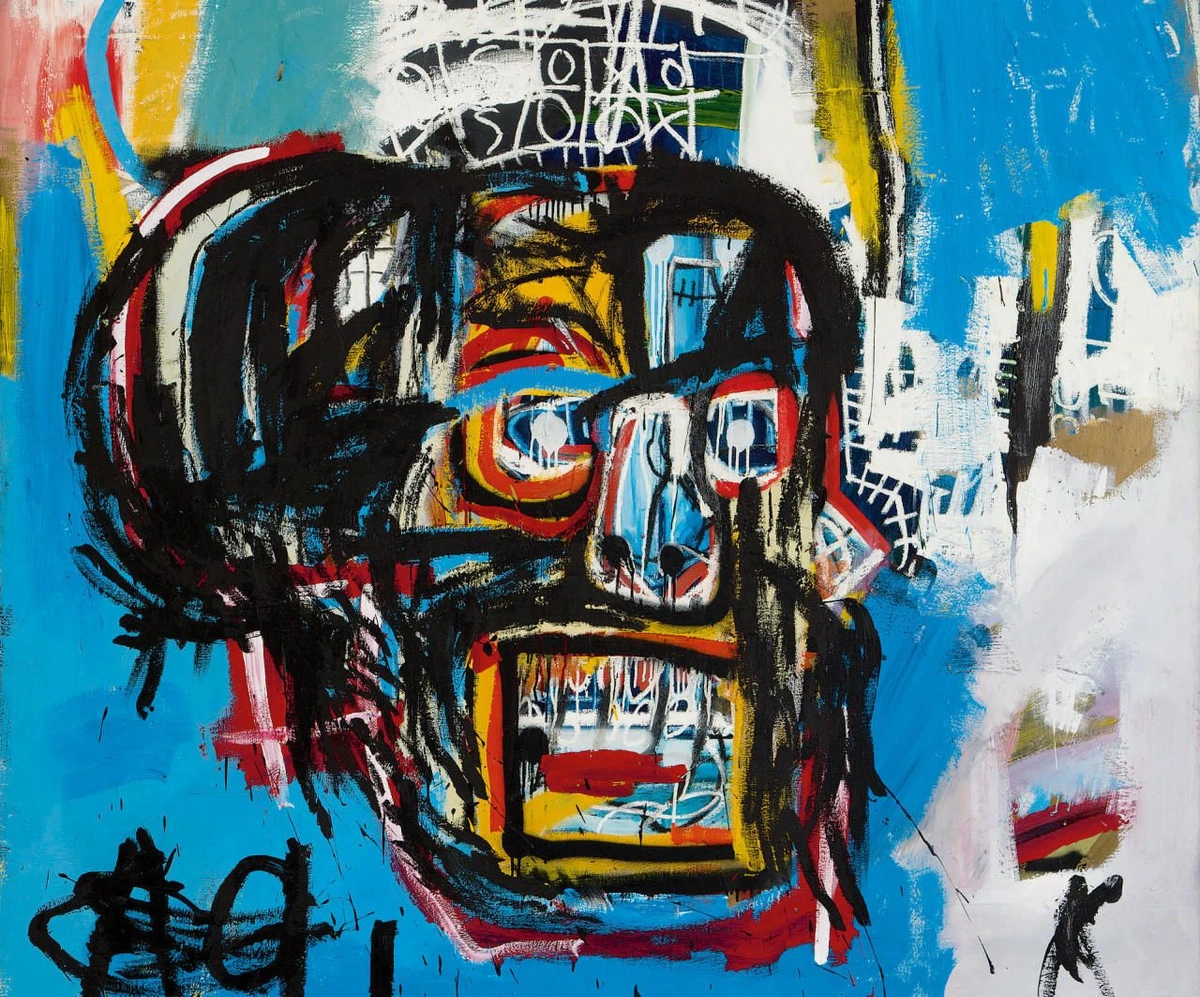
When we look at contemporary art, the echoes of these ancient symbolic traditions are still so clear. Take Jean-Michel Basquiat's vibrant skull painting, for instance. While not a classical mythical creature, it absolutely taps into something profoundly primal: mortality, identity, and a raw, almost shamanic power. It resonates so strongly with the ancient tradition of memento mori (remember you must die), much like ancient Egyptian depictions of skulls or Vanitas paintings from the Baroque era reminded people of transient existence, but it’s seen through a distinctly contemporary lens. It’s a modern archetype, resonating with the same visceral power that ancient beasts once did. It’s all about the echoes, you see? The way deep human experiences get distilled into powerful images that transcend time and culture. His work, like many contemporary artists, creates new mythologies, questioning existing narratives and symbols of identity and power, making symbolism vibrantly alive and constantly reinvented, even today. For more on this, my article on the symbolism of animals in contemporary art dives deeper into modern interpretations of animal imagery. It truly makes you think: what new mythologies are being forged in our world right now? How do they speak to our national identity or cultural pride?
My Studio, My Myths: The Enduring Power of Archetypes
So, with all this talk of ancient symbols and modern interpretations, how does it all come back to my studio? This fascination with underlying archetypes and shared human experiences deeply influences my own work. My interest isn't just aesthetic; it's rooted in the idea of a shared human psyche, a 'collective unconscious,' as Carl Jung put it. Jung believed that humanity possesses innate, universal patterns of thought and imagery – archetypes – which emerge from this shared psychological heritage, inherited from our ancestral experiences across countless generations. This explains why symbols like the hero, the sage, or the trickster, and creatures like the dragon or the phoenix, resonate across diverse cultures and times: they speak to fundamental, shared human experiences like birth, death, love, fear, and transformation. It's a feeling, a deep-seated recognition – like a shiver of understanding, or that 'aha!' moment when a new concept just clicks – rather than just an intellectual concept for me.
While I might not paint literal griffins or centaurs, the spirit of their symbolism—the balance of strength and grace, the tension between instinct and intellect, the cyclical nature of life, the journey of transformation, even the cunning of a trickster archetype—often finds its way into my abstract compositions. In my abstract pieces, I aim to capture the essence of these archetypes – the raw power of a dragon, the hopeful ascent of a phoenix – through dynamic interplay of color, form, and texture, inviting you to find your own connection. For example, I might explore the Minotaur's primal strength through a dynamic interplay of jagged, impasto forms in deep reds and blacks, evoking raw power and confinement. Or I might evoke the Phoenix's rebirth with a swirling vortex of shimmering indigo and gold, suggesting a transformative journey through darkness and eventual, radiant emergence onto the canvas. It’s a way of exploring universal themes without being prescriptive, allowing the viewer to project their own meanings onto the canvas.

This ongoing exploration involves a lot of research, digging into folklore, mythology, and art history from various cultures—it's like a treasure hunt for universal threads. Of course, when drawing from diverse cultural mythologies, artists carry a profound responsibility to engage with these stories respectfully, understanding their original context rather than simply appropriating them. This is an ethical challenge I constantly grapple with, an ongoing journey of learning and refining my approach. Instead of directly copying a sacred symbol, I might, for instance, explore the feeling of protection it evokes through abstract forms and colors, or the energy of an ancient deity through dynamic brushstrokes, rather than replicating its specific visual representation. This thoughtful approach also informs how I discuss themes with clients, helping them connect with the archetypal power behind a custom piece. You can see a bit more about how my ideas have changed over time on my artist timeline.

If you're wondering how these ideas translate into something tangible, well, that's where the creative process meets the real world. Sometimes, the raw energy of an ancient myth inspires a burst of color or a particular gesture in a painting. It’s never a direct translation, more of a feeling, a resonance that guides my hand. My article decoding abstract art: a guide to finding meaning in non-representational works explores how I imbue meaning without direct representation. If you’re interested in seeing some of these explorations, I often have pieces exploring these themes; feel free to browse my art for sale. You might just find a piece that sparks your own mythological connection, or perhaps a conversation for a custom piece.
FAQ: Unlocking the Vault of Meaning
To help unlock even more of this fascinating world, here are some questions I often get asked, reflecting common curiosities about mythical symbolism in art:
What's the difference between a myth and a legend in art history?
Oh, that's a good question, and one I often ponder! Generally, myths (like those featuring gods and goddesses, or creatures like the Hydra) often explain natural phenomena, creation, or fundamental truths about the human condition. They're often sacred and form the backbone of a culture's worldview. Legends, on the other hand, are usually stories about human heroes (like King Arthur or Robin Hood) who performed extraordinary feats, often with some basis in historical fact, even if embellished. In art, myths tend to deal with the supernatural and universal, while legends focus on human achievements and morality. But honestly, the lines get blurry, especially when an artist might interpret a 'legendary' hero in a way that elevates them to mythical status, or imbue a 'mythical' creature with characteristics rooted in everyday human experience. It's often more about the feeling a story evokes and its cultural function than a strict categorization.
What psychological impact do mythical creatures have on us?
That's a fantastic question, and one that gets right to the heart of why I'm so fascinated by this topic! Carl Jung's idea of the collective unconscious really hits home here. These creatures tap into deep-seated archetypes within our shared human psyche. When we encounter a dragon, whether it's fearsome or benevolent, it stirs primal feelings within us – fear, awe, respect, a sense of vast power. The Phoenix offers hope and resilience. The Sphinx challenges our intellect and our ego. They act as mirrors, reflecting our own fears of chaos and destruction, our aspirations for transcendence and wisdom, or the internal conflicts between our rational and instinctual selves. They give form to the formless, helping us process complex emotions and universal life experiences without necessarily articulating them verbally. For an artist, understanding this psychological resonance is key to creating work that truly connects.
Are modern characters (like superheroes) considered mythological creatures?
Absolutely, in a modern context! While they might not be 'mythological' in the ancient sense, characters like superheroes certainly function as contemporary archetypes and form part of our modern mythology or urban legends. They embody ideals (justice, strength, sacrifice) or fears (chaos, oppression) in the same way traditional mythological creatures did. Take Superman, for instance – a Christ-like figure, an alien sent to save humanity, embodying hope and divine power. Or Batman, the shadow archetype, driven by personal trauma, battling inner demons as much as external villains. Many superhero narratives, in fact, follow classic patterns of the hero's journey, a fundamental archetypal storyline of transformation and challenge. They represent the collective hopes and anxieties of our time, and artists are constantly reinterpreting them, much like ancient sculptors reinterpreted Zeus or Hercules. They're our new pantheon of symbolic figures, telling us stories about ourselves.
How have mythical creatures evolved in art across different periods and cultures?
This is a brilliant question that gets right to the core of artistic interpretation! Their evolution is fascinating. Often, a creature's depiction starts quite literally, deeply tied to religious or societal functions, as with the medieval unicorn representing chastity and divine grace in religious texts. But as societies evolve, so does the art. Renaissance artists, for example, might still depict the unicorn, but perhaps more allegorically, reflecting a shift towards humanism. Later, Symbolist painters in the 19th century might use the essence of the unicorn—its ethereal quality or elusive beauty—to comment on spiritual ideals in a rapidly secularizing world, sometimes without even showing the creature directly. Take dragons again: from monstrous serpents in early Christian art to benevolent rain-bringers in East Asian traditions, their visual form and inherent meaning adapted to the cultural lens and dominant narratives of their time. It’s a dynamic interplay between tradition and contemporary thought, continuously refreshing their symbolic power.
How do artists ethically approach using symbols from diverse cultures?
That's a profoundly important and complex question, and one I think about constantly in my own practice. It's a fine line, isn't it? For me, it comes down to respect, research, and intention. Respect means acknowledging the original cultural context and significance of a symbol, rather than just taking it superficially. This involves deep research into the folklore, history, and spiritual meaning, often going beyond surface-level understanding. The intention is crucial: Am I merely appropriating a visual element because it looks 'cool,' or am I genuinely engaging with the archetype it represents, exploring universal themes in a way that honours its origin? My goal is always to draw inspiration from the spirit of the archetype and the shared human experience it embodies, not to replicate or claim cultural artifacts as my own. It's an ongoing learning journey, demanding humility and constant self-reflection, ensuring I engage with these powerful stories thoughtfully and responsibly.
How did ancient artists learn about these myths?
That's a fantastic practical question, and one I think about often! Unlike today, where we might Google a myth or read a book, ancient artists learned primarily through oral traditions – hearing stories told and retold from childhood, whether in religious ceremonies, epic poems recited by bards, or simply everyday conversations. They also learned through religious texts and rituals, which provided a rich source of visual inspiration and narrative, often shaping the iconography they were expected to use. And crucially, through the visual guides everywhere—temples, public spaces, and even everyday pottery provided a constant stream of imagery. Imagine growing up surrounded by these stories etched into stone and painted on walls! Many also learned through apprenticeships, where master artists would teach their apprentices not only techniques but also the narratives and iconography expected in their work. So, by the time they picked up a chisel or brush, these myths were deeply ingrained in their cultural consciousness, not just dry texts they had to memorize. They lived and breathed these stories, absorbing them from the very fabric of their society, and their art became a direct expression of that shared understanding and lived experience.
How can understanding mythical symbolism practically help a contemporary artist?
This is where the rubber meets the road! Beyond personal inspiration, understanding mythical symbolism is incredibly powerful for a contemporary artist. First, it offers a rich wellspring of thematic depth for your work, allowing you to tap into universal human experiences without resorting to literal representation. This makes your art more resonant and relatable to a broader audience. Second, it's a fantastic tool for concept development and articulating your artistic vision, both to yourself and to others. When a client asks about the meaning behind a piece, you can discuss the archetypal energies or cultural narratives that inform it, adding layers of intellectual engagement. Third, it helps you develop a unique artistic voice by allowing you to engage with profound, resonant themes, making your work part of a larger, ongoing dialogue without needing to be literally illustrative. It sharpens your critical eye, enriches your creative vocabulary, and helps you craft narratives that truly connect across time and culture.
Ultimately, this journey through mythical creature symbolism in art, from ancient frescoes to abstract contemporary pieces, isn't just a historical tour. It’s a profound reminder that we humans, across all cultures and times, are constantly seeking to understand ourselves and the world around us through stories and symbols. For me, as an artist, it’s an endless source of inspiration, a constant invitation to tap into that shared 'collective unconscious' and translate those enduring archetypes into something new, something that might just resonate with you. So, next time you encounter a mythical creature in art, or even just a striking contemporary image, pause for a moment. What ancient whispers do you hear? What modern truths does it reveal? The conversation is always ongoing, and I hope my art can contribute to it, sparking your own mythological connection. If you're ever in the Netherlands, I'd be thrilled if you visited my museum in Den Bosch to see these themes, and many others, in person. And I'm always curious to hear what resonates with others!




